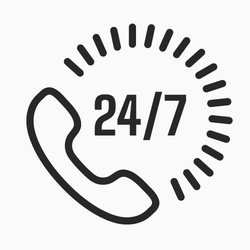Have you looked in a full-body mirror while out and felt you look completely different in it than your mirror at home? Don’t worry; it’s not in your head. Mirrors are each built a little differently, and those differences give us subtly wrong reflections.

If you’re looking for tips on the best full-length mirrors or just curious about why mirrors can look different, then you’re in the right place. Read on to know the factors that affect your reflection.
Are All Mirrors the Same?
No, mirrors vary quite a bit, and these differences can be subtle. Lighting, the type of mirrors, and glass quality will all impact the quality of a mirror and change what you look like. To get an idea of how this works, you should know about a few different types of mirrors.
Concave and Convex Mirrors
You’re probably familiar with fun house mirrors. They dramatically distort your image, making you long and thin or short and wide. This is due to the shape of the glass contorting your reflection. It’s not just fun house mirrors that have this, but regular mirrors, too.
Normal full-body mirrors should be perfectly flat, but sometimes they have a slight curve in them. A convex mirror curves outwards, making you look wider than you are. Concave mirrors curve slightly inward, like car mirrors, making you look thinner.
It’s hard to spot if you have a concave or convex mirror at first, as the curve can be subtle. Look closely at the glass to spot curved mirrors and avoid trusting these; instead, you’ll want to find flat mirrors, also known as plane mirrors.
Tilted Mirrors
When a mirror is tilted at an angle, it will give you a different image than if it were flat against the wall. Gym mirrors and dressing room mirrors will often use this tactic to make you look better. They tilt the mirror down at different angles towards you, distorting and elongating your body.
Your best bet for an accurate image is to find a mirror flat against the wall.
Plastic vs. Glass Mirrors
While you may think all full-body mirrors are glass, some cheap mirrors are made out of plastic acrylic. These will degrade easier and faster, creating warps in the mirror that change your reflection.
You can spot a full-body acrylic mirror if you look closely at the material. It will look lighter and less clear than glass does.
Lighting
Another thing that affects your reflection is lighting conditions. The same full-body mirror may give you two different reflections of yourself, as harsh shadows under certain conditions will affect how you see your image.
Age of Mirror
Older mirrors are likely to produce a distorted image. This is due to the weight of the glass bending over time and creating curvature. If you have old mirrors that used to be great, it’s possible they have changed over time.
This is why you should approach buying older mirrors with caution. They will likely provide a less quality image than newer and nicer ones.
How Do I Find a Good Full-Body Mirror?
Mirror quality is based on the glass thickness, glass quality, and lack of curvature. You'll need to look out for these three things to find high-quality full-body mirrors that give you the most accurate image.
On the other hand, thin mirrors will distort more easily, as glass is a heavy material that may become bent over time.
Best Place to Put a Full-Body Mirror
The best place to put your mirror to give you the best results is somewhere with natural light or soft lighting, as harsh and bright light can create shadows that increase the intensity of certain angles on your body.

You may want to consider getting an LED mirror if lighting is important to you, as it provides even and soft lighting to maximise the quality of your reflection. These types of mirrors are best for applying makeup and getting close-up lighting and come in full body length as well.
Another important factor is hanging your mirror flat against the wall. Mounting certain mirrors may be tricky, but it’s essential that it is flat to give you the best reflection possible.

Reflections Are Reversed
When asking if full-body mirrors are accurate, one could say no because they are a reversed image of yourself. Hence, your reflection looks different than your photos—and it’s a weird thought that you’re more familiar with a reversed perception of your face compared to what your friends and family see in real life.
Are Mirrors or Photos More Accurate?
Mirrors are known to be more accurate than photos for perceiving yourself. This is because photos take you, a 3D object, and put it into a flat and still 2D form.
While mirrors also reflect a 2D image, they move with you, giving a more accurate image of yourself. You should remember, though, that the image you’re seeing in the mirror still lacks depth as a 2D image.
Wrapping Up
If you’re on the hunt for a full-body mirror that gives you an accurate reflection, we recommend finding a high-quality, flat and thick glass mirror. Steer clear of low-quality mirrors that will eventually cause problems if they don’t already give a poor reflection.
Overall, a good full-body mirror is a worthwhile investment to make in your home. You can find a selection of great full-length mirrors for your home at Mirrors Direct.




